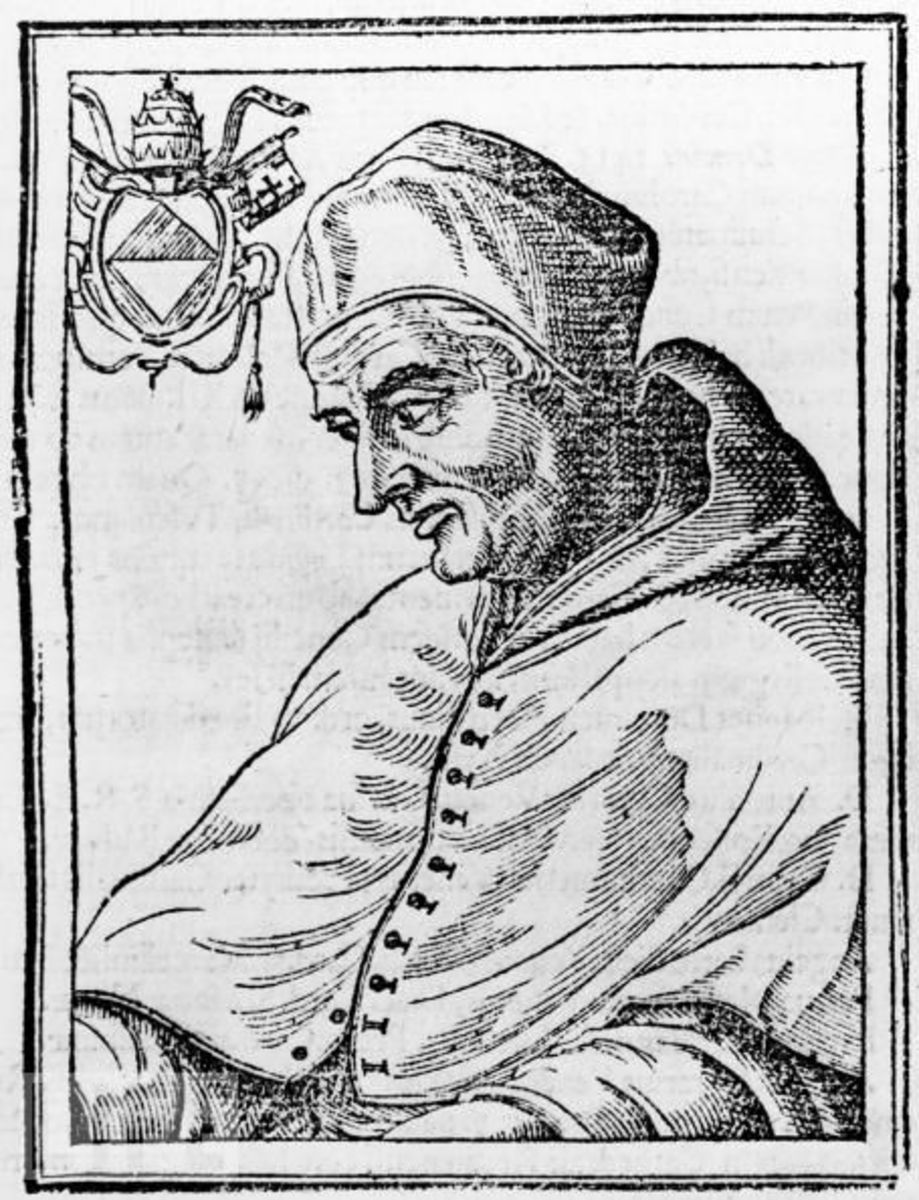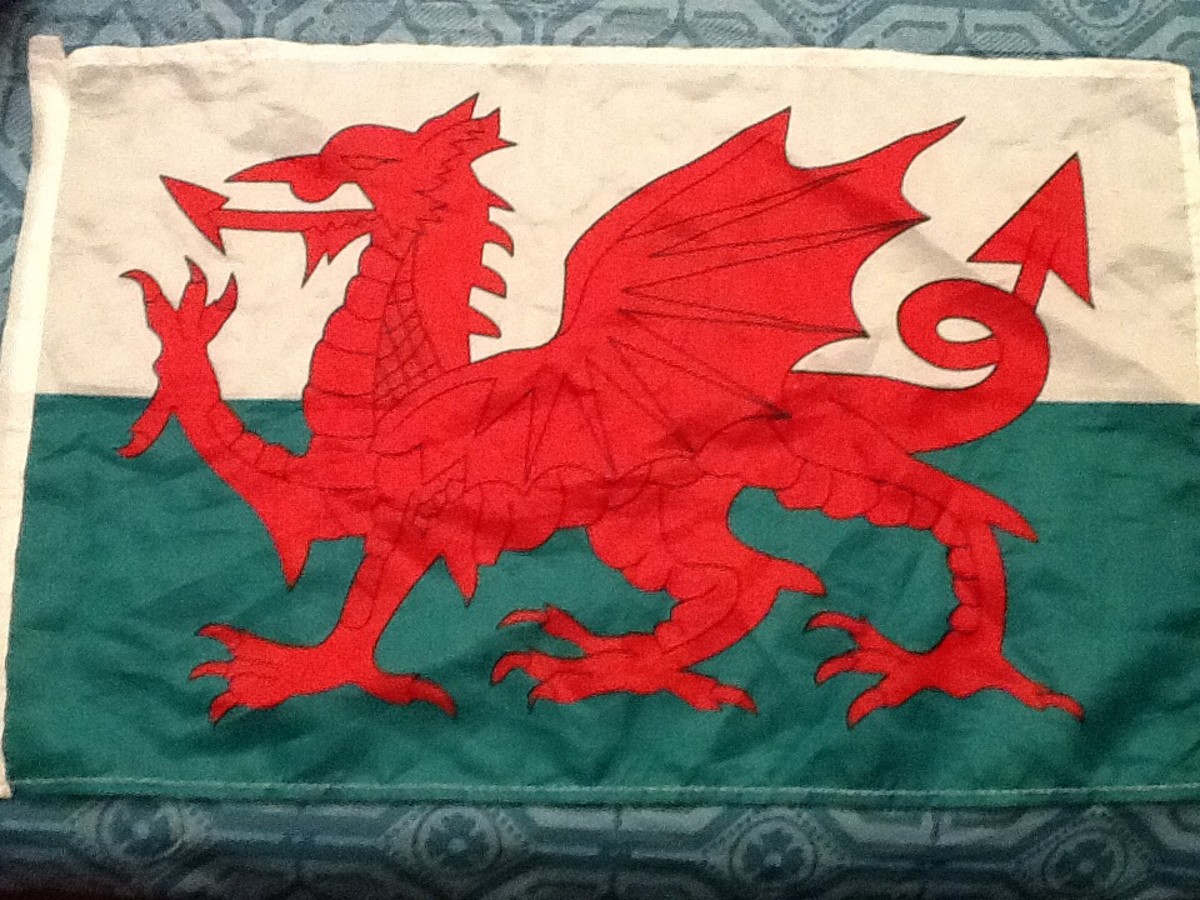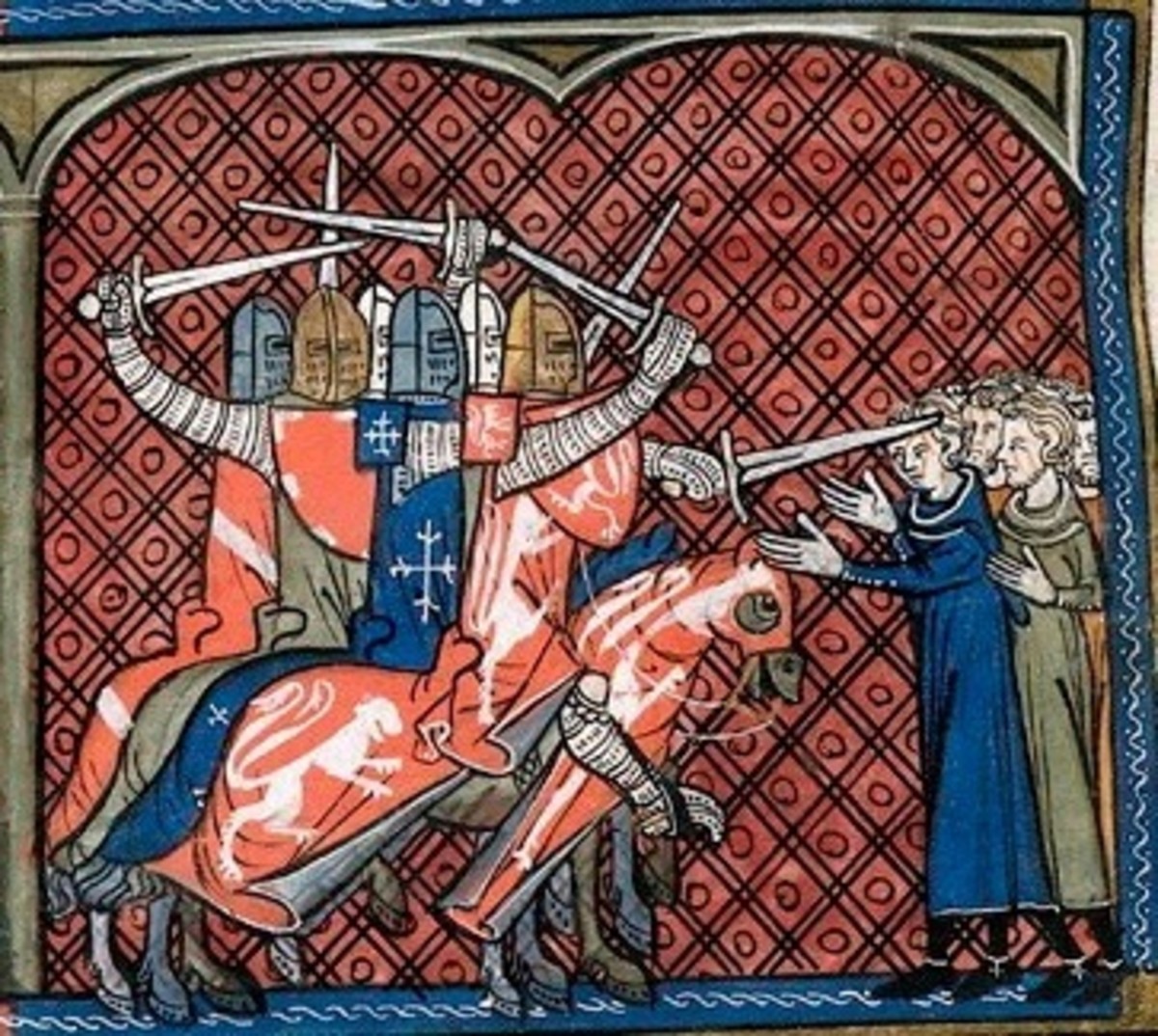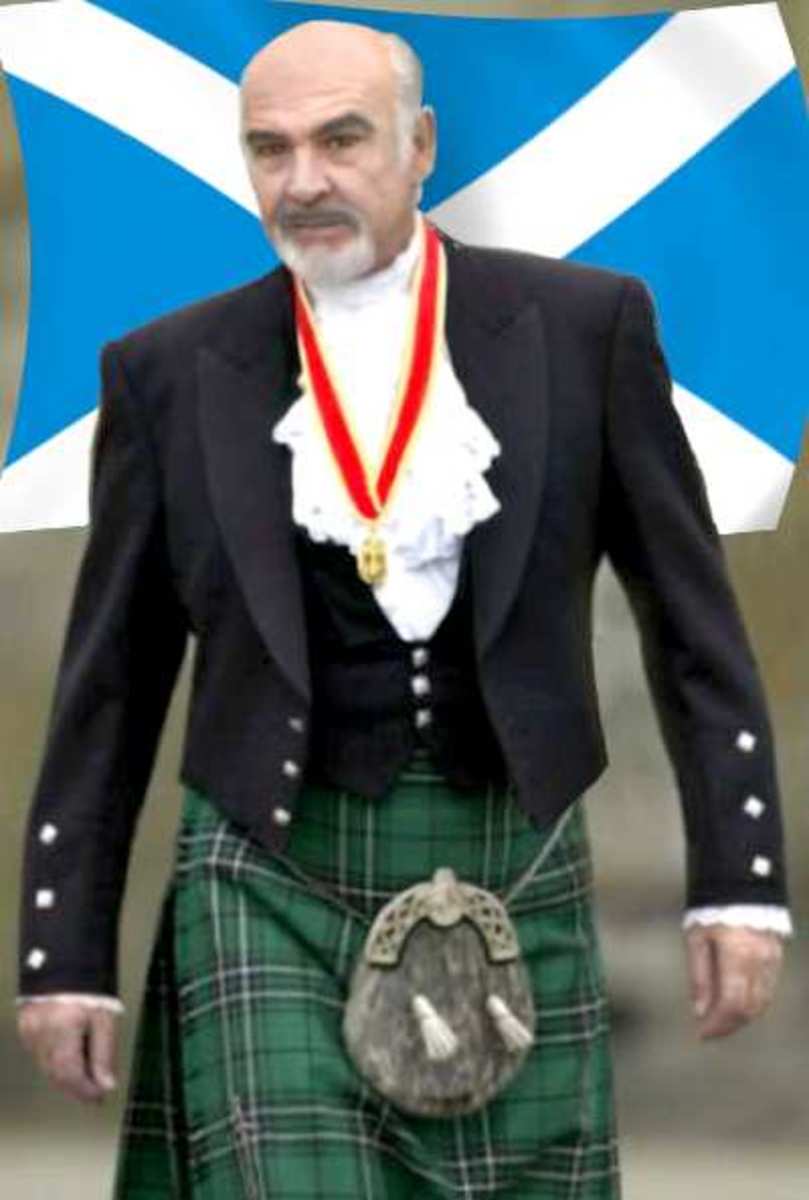Why St David is the Only Welsh Saint in the Roman Catholic Church's General Calendar of Saints
Wales Has Many Saints
The Saints of Post Roman Britain page of the David Nash Ford's Early British Kingdoms website lists 53 Welsh saints and this probably doesn't include all of them.
Numerous towns and ancient churches scattered throughout Wales bear the names of these Welsh saints. However, in the Roman Catholic Church's General Calendar of Saints, there is only one Welsh saint and that is St. Dewi whose name in English is St. David.
So what happened to all the other Welsh saints?
Hub 9 for 30 Hubs in 30 Days Challenge

Most of the Welsh saints who never made it into the Church's Calendar of Saints, including St. David's Mother, St. Non (also known as Nonna or Nonnita), were real men and women who had led holy lives and were worthy role models for the faithful to try to emulate.
The early Christian Church, and the Roman Catholic Church today, defined saints to be everyone who had died and gone to Heaven. Of course, only God knows which of the departed are in Heaven and which are not.
However, it has always been believed that those who have led lives of exemplary virtue and who have striven in their lives to follow and practice the virtues that the Church preaches have gone to Heaven upon their death. These people have been designated by the Church as saints and have been held up as examples for the faithful to follow.
In the Early Days of the Church the People Decided Who Were Saints
In the early Christian Church the bestowing of the designation of sainthood upon someone who had died was a very democratic process.
When a person who had both led a life of personal virtue and had also been a leader who had helped and taught others in the community died they continued to be remembered and their lives held up as an example for the community to follow.
The Three Saints Valentine
In my Hub History of Valentine's Day I explained that there were actually three saints in the early Church named Valentine.
All three lived and died in the third century. A few facts are known about the two who lived in Italy while all we know about the third is that he died a martyr's death in Roman controlled North Africa.
Following the death of each of these Valentines local people began to look to each of them as models to follow in their own lives as well as having been a former member of the community that individuals could turn to them in their prayers and ask the Saint to intercede on the individual's behalf with God.
As time passed the reputations of the three Valentines spread over a wider area the three began to merge into one in the minds of the people.
About two centuries later, in 496 AD, Pope Gelasius I honored all three by proclaiming February 14th (the date that the two Italian Valentines were put to death but in different years) to be the Feast of St. Valentine.
St David of Wales
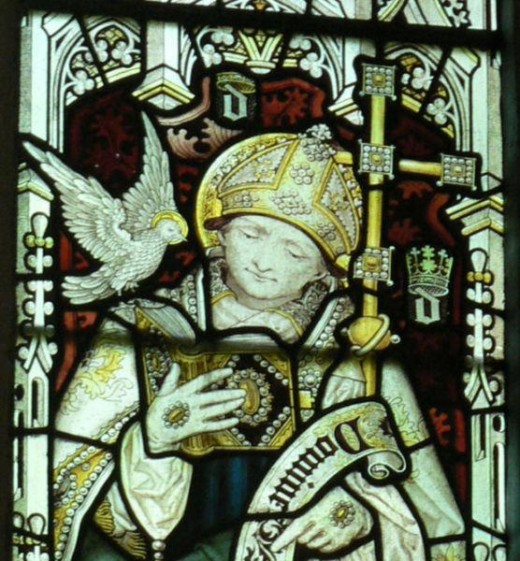
Fame of Welsh Saints Limited to British Isles
The same democratic process of elevating people who had led holy lives to the status of sainthood following their death was followed in the early days of Christianity in Wales and the rest of the British Isles.
However, geography and history intervened to prevent the numerous saints in this area from being recognized as saints by the Church as a whole.
Unlike the Mediterranean area where the saints Valentine lived, Wales and the British Isles lay at considerable distance from Rome which was the center for both the Church and the Empire.
Because of this distance, there was less travel and communication between these areas and Rome and this tended to limit the spread of tales about saints in the British Isles.
So, unlike the Saints Valentine whose fame spread, the reputation of the saints of Wales and other parts of Britain tended to remain local. The chaos that followed the break-up of the Roman Empire in the West resulted in further interruptions of travel and communication.
Flag of St. David

Vikings Stole Treasures From Welsh Monasteries and Burned their Books
Beginning about the ninth century (800 AD) and for the next three to four hundred years Wales suffered numerous raids and attacks by Vikings, many of them launched from Viking settlements in Ireland.
Churches and monasteries, which had in their possession crosses, chalices and other religious artifacts often made of gold or silver and often decorated with precious stones were popular targets for plundering by the Viking raiders.
In addition to the theft of valuable materials, the Vikings tended to destroy what they did not steal and among the things usually burned and destroyed were books and other written records.
Thus, not only was the fame of Welsh saints limited to Wales, the written record of them was also destroyed.
This became critical when the Catholic Church decided to formalize the process of identifying saints with procedures that relied upon written records and formal verification.
Links for More Information
- History of Valentine's Day
Like other major holidays, Valentine's Day began as a Christian feast day with strong secular influences. In a way it can be said that a number of secular traditions and practices that came to be merged with... - Early British Kingdoms Home Page
Page on Early British Kingdoms Home Page listing saints of the British Isles - St Patricks Day
March 17th is St. Patrick's Day, a holiday honoring St. Patrick, the patron saint of Ireland who died on March 17th (the exact year is unknown but is believed to be around 460 A.D.). Like St. Nicholas, we... - EBK: Saints of Post-Roman Britain Index
A website devoted to post Roman Britain
Rome Institutes a New Canonization Process
It was during the period when the Vikings were wreaking havoc plundering and destroying churches and monasteries in Wales that the Catholic Church in Rome decided to formalize the process of bestowing the honor of sainthood on those deceased.
The new process required documented evidence of the prospective saint's life and miracles worked after death. While the faithful were, and still are, allowed to admire and seek intercession with anyone who has passed on, only those who meet the Church's more stringent standards are now recognized by the Church in its official Calendar of Saints.
The new canonization began in the early 900s (tenth century) and the first saint canonized under the then new process was St. Ulrich of Augsburg who was canonized and his name added to the official Calendar in 993.
Of course, most of those, including Saint Valentine, who had been recognized as saints by the Church in Rome prior to the establishment of the new process were, in effect, grandfathered in and had their names added to the list.
Unfortunately the numerous Welsh saints, whose fame was mostly local and therefore unknown in Rome were not grandfathered in and had to go through the new process to gain recognition.
Saint David, who was born sometime between 462 and 512 AD and is generally believed to have died on Tuesday March 1, 589 AD, was, like his fellow Welsh saints, not well known in Rome and thus not grandfathered into the official Calendar of Saints.
St. David is Canonized by Pope Callistus II in 1120 A.D.
However, St. David was not only well known in throughout Wales but also enough written references to and about him survived the Viking raids to meet Rome's requirements for canonization.
St. David was canonized in 1120 and his name entered in the Calendar of Saints by Pope Callistus II. His feast day is March 1st the anniversary of his death.
While we still have very little solid documentary information about St. David, what we do have was apparently enough for the Church in 1120 and in 1969. In 1120 the data available was sufficient to meet the Church's requirements for canonization.
Flag of Wales
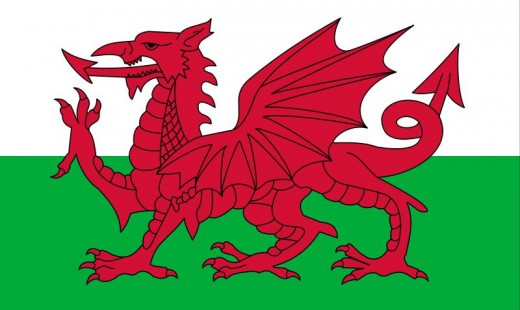
St. David Remains in Calendar of Saints While St. Valentine is Removed
In 1969 the Church reviewed the Calendar of Saints and decided to remove from the Calendar of Saints a number of those for whom little factual evidence existed.
Like the Welsh saints, these saints who were removed from the Calendar were real people but not enough written evidence exists to separate the truth from legend in the accounts we have of them.
Thanks to having made it into the official calendar via the official process, you can still find St. David's name on the calendar for March 1st while February 14th has the names of Saints Cyril and Methodius, while that of Valentine does not.







